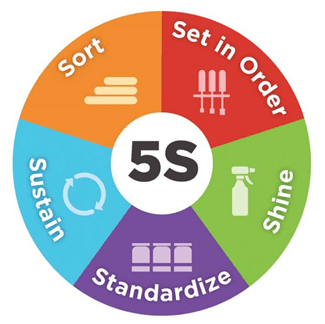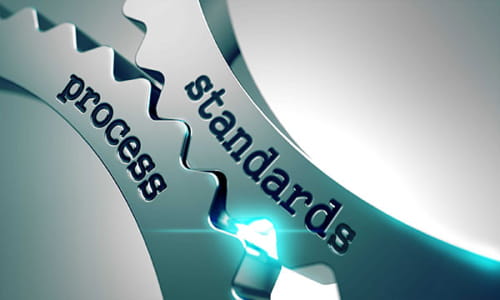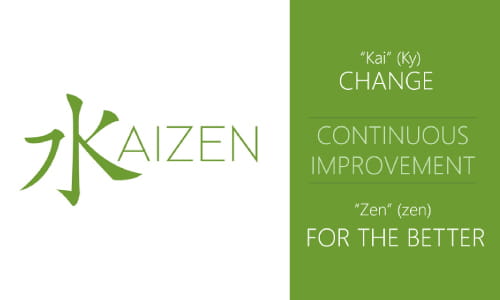What is Continuous Improvement?
Continuous Improvement is an ongoing effort by companies to improve products, services, or processes.
At Associated, we are focused on continuing to lay the foundation in which Continuous Improvement is built upon. To create this stable foundation, we have focused on developing our people by providing them with the training and tools necessary to understand and apply the foundational principles of the Toyota Production System (TPS) to identify and eliminate waste within the workplace. In doing this, it has made our team stronger which makes us better positioned to serve you - our customers.
2S/5S
2S/5S is a foundational principle of TPS which leads to standard work practices that are repeatable, consistent, and required to gain control over daily activities and ensure operational effectiveness. 5S refers to five words that all begin with the letter S. The 5S’s are as follows:
-

Sort: Identify all items necessary in the workplace and then remove any unnecessary items
Set in Order: Properly arranging and aligning materials and/or tools that are determined to be necessary to do the job
Shine: Clean the area while inspecting it to expose abnormal conditions
Standardize: Standardize the first 3 steps and ensure that all team members are trained to perform these steps with consistency
Sustain: Develop self-discipline and set up a monitoring system to observe the maintenance of the organized and standardized workplace
At Associated, we focus on perfecting the first two S's: Sort and Set in Order (2S).
We do this because once we have a great understanding of these two, the following S’s tend to fall into place on their own. 2S/5S has allowed us to reduce clutter in work areas, increase teamwork and employee morale, create immediate visual changes in work areas and foster a culture of continuous improvement.
-

Standardization
Standardization is also one of the foundational principles of the Toyota Production System. Standardization refers to best practices or finding the best way to perform that task and continuing to do it that way. In the world of Continuous Improvement, standardization must always be in place before improving a process. It is important to remember that standards are driving by the people working the process as they know the job better than anymore.
To sustain our current standards in place, we have focused on developing standard work across numerous departments. Standard work establishes clearly defined expectations, ensures processes are safe, helps identify root cause of defects, reduces the need for tribal knowledge, and creates processes that are repeatable and reproducible. Standard work helps in training employees, assists management in audit processes, provides employees with reference document, and helps improve processes as well.
-

Kaizen
Kaizen is one of the foundational principles of the Toyota Production System. The word Kaizen is made up of two Japanese words put together: Kai 改 = Change, Zen 善 = For the Better. In Lean culture, we know Kaizen to mean Continuous Improvement.
Kaizen are small, incremental changes that make a big impact to a process. The goal of Kaizen is to make positive changes that are focused on improving quality, refining processes, and eliminating waste.
At Associated, we are focused on developing our employees to identify waste in their processes. We trust in the creative power of our employees to eliminate these wastes and want to empower all employees to act on these kaizen ideas.
-

Visualization
Visualization is a way to visually communicate expectations, performance, standards, or warnings in a way that requires little or no prior training to interpret. The intent of visualization is to create an environment where everyone can easily and readily:
- Comprehend what is going on in the workplace
- Understand processes
- Recognize what is being done correctly and incorrectly
- Identify what is out of place
- Realize the actions that need to be taken
Overall, practicing visualization makes an operation much simpler to understand and easier to work in. Examples of visualization include but are not limited to: KPI boards, signage & labels, 5S striping, tool shadow boxes and much more.



